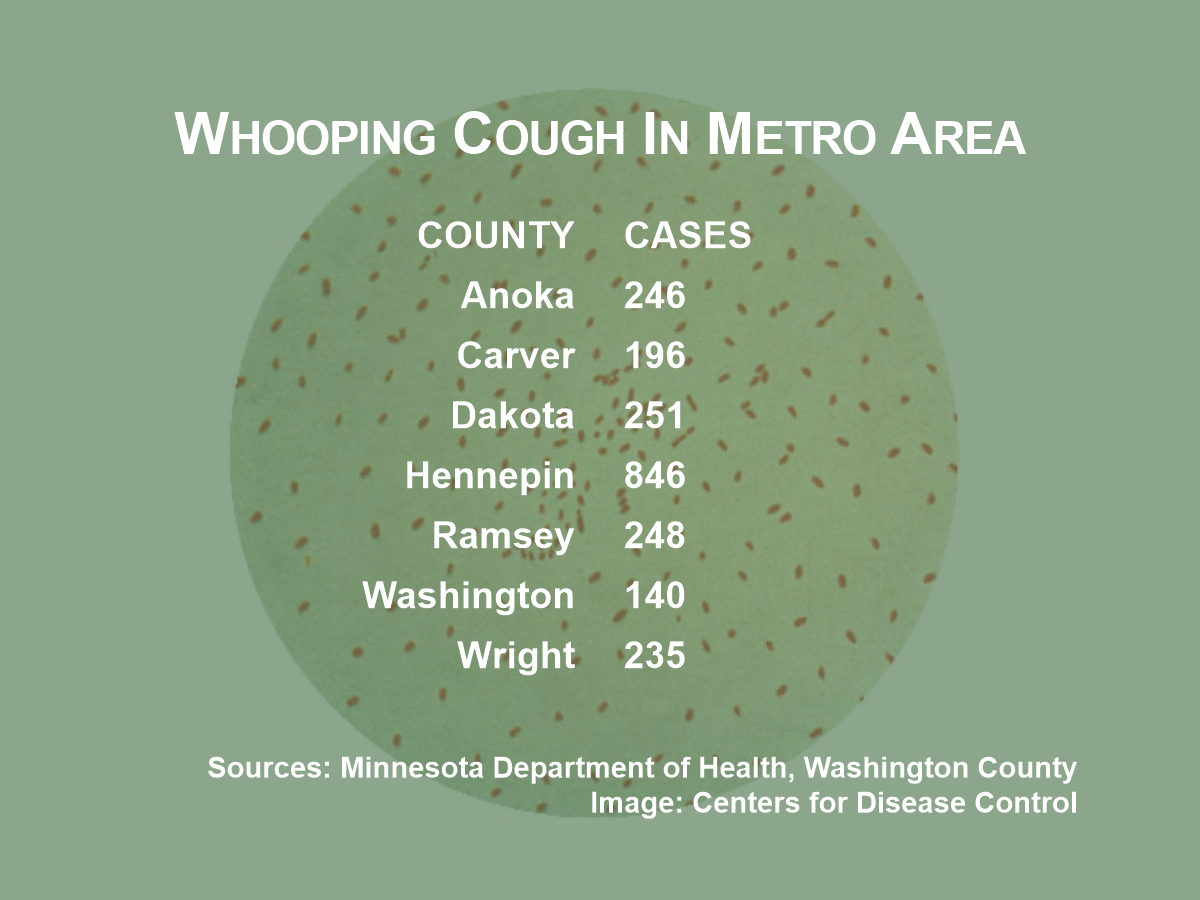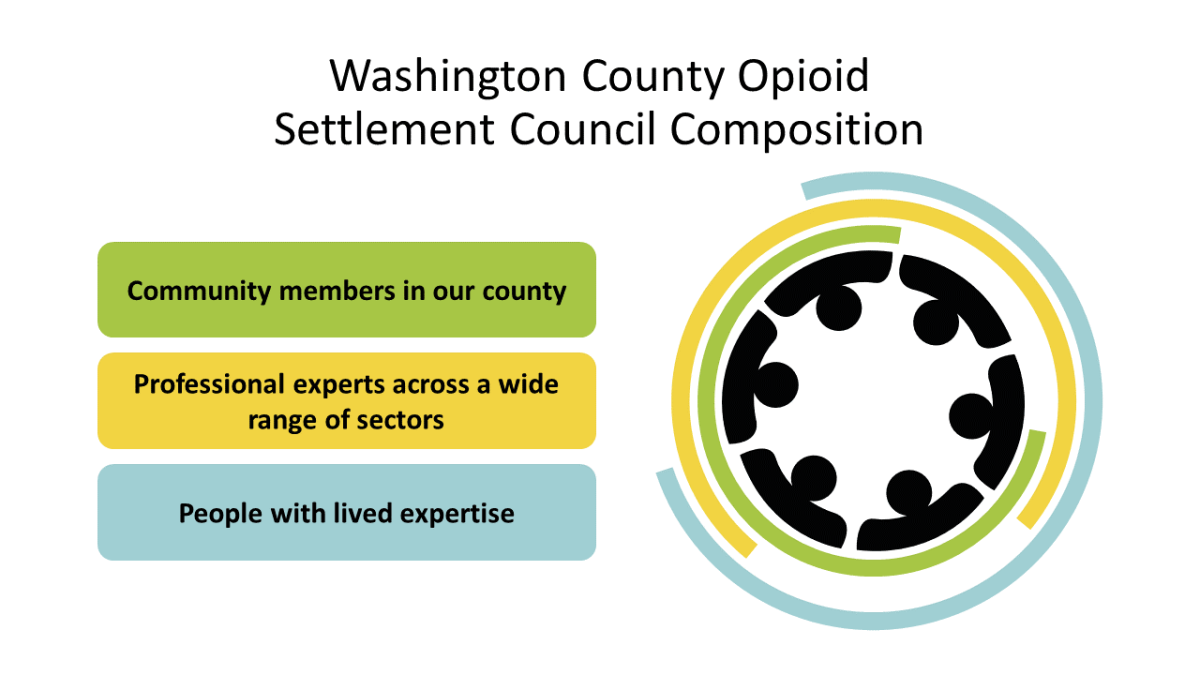A tsunami-like surge in pertussis cases that struck late this fall in many of Minnesota’s larger counties, particularly in the metro area, carried Washington County in its wake.
While case numbers seem to be leveling off, health officials say it’s too early to know if the outbreak has peaked. They urged residents to remain vigilant in practicing prevention measures against respiratory infections.
More than 3,110 cases of pertussis, also known as whooping cough, were reported in Minnesota in 2024, according to statistics from the Minnesota Department of Health (MDH). That’s more than at any time since 2012, when a collision of events pushed cases above 4,000 for the first time since 1937 (prior to modern vaccines). By contrast, only 61 cases of pertussis occurred statewide in 2023.
In Washington County, 140 cases of pertussis were reported in 2024, said David Brummel, director of environment and public health for Washington County. That’s up from four cases in 2023. The county recorded four cases in August, 16 in September, 21 in October, 38 in November and 38 in December, he said.
Hennepin County had the most cases of any county in the state and the vast majority of cases in the metro area with 846.
School Cases
While the state was recording between 100 and more than 200 cases a week during the final weeks of the year in 2024, South Washington County Schools saw only “a few cases” of pertussis before the winter break, said Shawn Hogendorf, director of communications and community relations for the school district.
That discrepancy may not be as stark as it seems, said Chris Keller, epidemiologist for Washington County. Once known as a disease of young children, pertussis is increasingly occurring in older adolescents and adults. While most cases in the county are still in the 13-17 age range, a significant portion are in adults, so those cases don’t show up in the school data. Also, there are five different school districts in the county, as well as a number of private schools and charter schools; each of those may say they had “only a few cases” to follow-up with, but those numbers add up over time, Keller said. Also, a number of cases in school-age county residents don’t get reported back to local schools for a variety of other reasons, Keller said.
Neither the county nor the school district had data specific to Woodbury schools.
Prevention
Pertussis is caused by a bacteria that affects the lungs and is spread through the air in droplets that come from coughing or sneezing, according to MDH. “The best way to prevent pertussis is for all children to be fully vaccinated on time, for adolescents and adults to get a booster shot, and for women to be vaccinated during each pregnancy,” said Cynthia Kenyon, senior epidemiologist with MDH.
Demographics
While pertussis has been increasingly seen in older children and adults over the past 10 years, that wasn’t always the case, and young children and infants are still at highest risk for severe disease if they are infected, health officials say. That’s why it’s so important for all age groups to be up to date on their pertussis vaccines, Brummel said. “That’s the best line of defense to stay healthy, to protect yourself and others. And it’s never too late to get vaccinated,” he said.
In the current outbreak, the vast majority of cases are occurring in older children, ages 13-17, particularly middle school students, and adults over 18, according to state data.
Washington County’s situation mirrors that of the state, Brummel said. The mean age for cases in the county was 14 in 2024, while it was 16 statewide. “So it’s occurring in all ages, but definitely in the school population,” he said. In 2023 in Washington County, 53% of cases (34) occurred in adults 18 or over.
While the number of cases has subsided in the last few weeks, health officials say it’s too soon to know if they’ve peaked or if they could resurge. “There is still a lot circulating out there,” Brummel said. “We’re seeing cases still continuing, so it’s important to stay vigilant.”
One possible explanation for low case numbers in South Washington County Schools is the historically high vaccination rate among students for the vaccine that protects against pertussis. The vaccination rate for K-12 in South Washington County Schools was above 98% for DTaP (diptheria, tetanus and pertussis) prior to the pandemic; it dipped slightly during the pandemic years, but remained above 93%, and has climbed back above 96% for the last two years. (From MDH school immunization data).
“Those high vaccination rates definitely help,” Keller said.
What’s Causing Surge?
So if pertussis can be prevented with vaccines, why the surge in cases? The reason for the large number of cases this year in Minnesota, as in the nation, has its roots in the history and nature of the disease, as well as its vaccine.
In the first half of the 20th Century, pertussis was one of the most common childhood diseases and a major cause of death among U.S. children, according to the Centers for Disease Control and Prevention (CDC). In Minnesota, several thousands of cases occur each year, most of them in infants and very young children, for whom the disease can be life-threatening. With the broad introduction of an effective vaccine in the early 1950s, cases fell to below 100 for most years in the 1970s through 1990s. However, due to growing concerns about the safety of that vaccine, use of a newer type of vaccine called DTaP began in the 1990s.
While that vaccine had fewer side effects, it wasn’t as good at preventing infections, Kenyon said, in part because it has a shorter span of immunity. By around age 7, immunity begins to wane sharply, and by age 11-12 a booster, called Tdap, is needed. The Tdap booster is also recommended for adults. However, recent studies suggest that immunity wanes sharply after two years with Tdap. Consequently, once pertussis starts to circulate in a population, it can “find” those who have that waning immunity as well as those who are unvaccinated. But those who have been vaccinated typically have less severe symptoms.
“The large increase this year is partly due to the waning of the vaccine and some slight dips in Tdap coverage, but is also due to a return in trends seen before the COVID-19 pandemic when pertussis cases surged every 3 to 5 years,” MDH’s Kenyon said. “The last peak year for pertussis was 2016. We likely would have seen another peak in 2020, but COVID-19 precautions helped prevent the spread of pertussis.”
Pertussis can be treated with antibiotics, but treatment may not cure the symptoms. However, antibiotics will reduce the spread of disease to others. Antibiotics are most effective if given early, within 1-3 weeks of when symptoms began.
More information, including specific recommendations for prevention and treatment of pertussis, are available on the MDH website.
Editor’s Note: Doug Schultz is a former communications specialist for the Minnesota Department of Health.

















